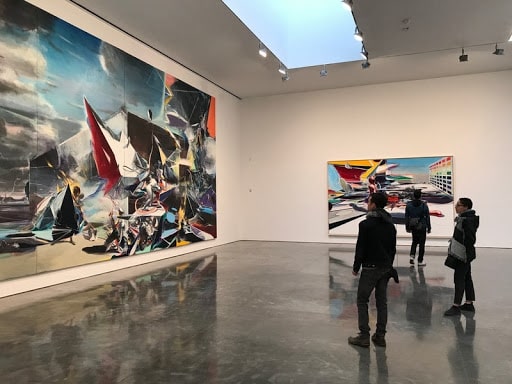Preparing for Exhibition

You have an exhibition soon? Great! Are you ready? This question might seem simple, but it actually includes a lot more stuff. Exhibitions are important steps in any artist’s career, as they are not only a way to get your works appreciated and to contact potential buyers, but also an excellent platform to receive recognition among your colleagues and art experts, and thus to make new and interesting contacts.
However, just because you request a gallery to represent you, or a gallery to select you, doesn’t mean you can lie on the couch and wait for the opening day. You must do many things before you can proudly display your art at your opening reception.
This is all you need to know and do to prepare for an exhibition. We also have a complete checklist at the end of this article to help you with this process.
The works
Obviously, the most important aspect of all this is to prepare the works. You have to take care of a few things before and after transporting your works to the gallery to be installed.
Choose the perfect pieces
If the part of selecting the works is up to you, keep in mind that this collection of works should expose your style and ideas. Choose works that are consistent with each other in terms of style, or that simply look good together. Try to imagine them in the gallery space, and make sure that the works you’ve chosen complement each other and together communicate what you want to say to those who see them.
Photograph your works
This is an important step. You must have good quality images of all the works you will exhibit. Most galleries use the images provided by the artist to promote the event on the Internet and for other exhibition materials, such as catalogues and press releases, and so it is important that the images are of good quality. Also, once the artwork is sold, the only thing you will have left will be its photograph.
Prepare the works for the exhibition
- Finishing touches: inspect your works properly. Do you have to put finishing touches? Check the edges and see if you need to paint them.
- Framing: this depends on whether the gallery will frame the works, or if you will do it. A frame is like an extension of your painting, and when chosen correctly, it can greatly improve the final appearance of your work. Even if the gallery takes care of the frames, you can send them suggestions on what kind of frame you would like the work to have. As we mentioned before, only you know what will be best for your work.
- Documents: you also need your artwork to be ready for sale. You must make certificates of authenticity. Sometimes, it may be necessary to do other things in advance, such as signing invoices or filling out important forms.
Transport
Make sure that the works are packed correctly to avoid damage during transport. You should also make sure that you send the artwork in plenty of time before the deadline. This way, even if the artworks are damaged a little, the gallery will have enough time to repair them.
The artist
Once your works are underway, it’s time for you to prepare for the big day. Whether this is your first exhibition or your hundredth, what you want to communicate to the public is that you are a serious artist and that your work is worth showing to the world. This means that you must prepare yourself for that role.

Prepare and send your personal information
As a practicing artist in today’s society, it is crucial that you have all your information at hand and this includes having your art statement and your specific art resume. You will also need to send them to the gallery to be published in their catalogues or displayed alongside your work. However, before you send the documents, read them carefully to make sure there are no mistakes or that you have not forgotten to make some changes. Update your CV and add your most recent achievements. Make sure your art statement fits well with the works you selected for the exhibition.
Prepare your outfit
This may seem trivial compared to other crucial details mentioned here. However, it is important that you look good and are comfortable during the opening reception, and that your attire gives the right message. Your sense of style says a lot about you, and about your career as well. Choose a presentable outfit that gives the right information, and at the same time, makes you feel confident.
You should know your art like the back of your hand
Obviously you know everything about your works because you created them, but sometimes it’s difficult to express certain things in words, especially when you are very emotionally involved with your works. Something that helps with this is talking about your art with a family member, or a friend.
Be prepared for criticism
An exhibition is not just about selling the works. It is also an excellent opportunity to show your works and see them from other people’s perspectives. Of course, art is a subjective thing and you will receive all kinds of opinions. Be prepared to listen to all the comments you receive, whether they are positive or negative, and learn from the criticism you receive. This habit will also help you a lot with your artistic process.
Have a positive attitude
The most important thing is to enjoy the whole experience. To exhibit your work in front of other people is a great achievement. No matter how the exhibition turns out, you should always keep a positive attitude. It is not necessary to validate your talent through sales. Selling your artwork is simply an enjoyable benefit of this learning experience.
All artists remember “the extraordinary experience of their inaugural reception throughout their lives. Make sure all your affairs are in order so you can enjoy that day to the fullest.
A gallery show is an achievement, and so is getting you and others to acknowledge your work. You should view the reception as a big themed art party open to anyone who loves art and can make art. Don’t forget that it is a party: have fun!

